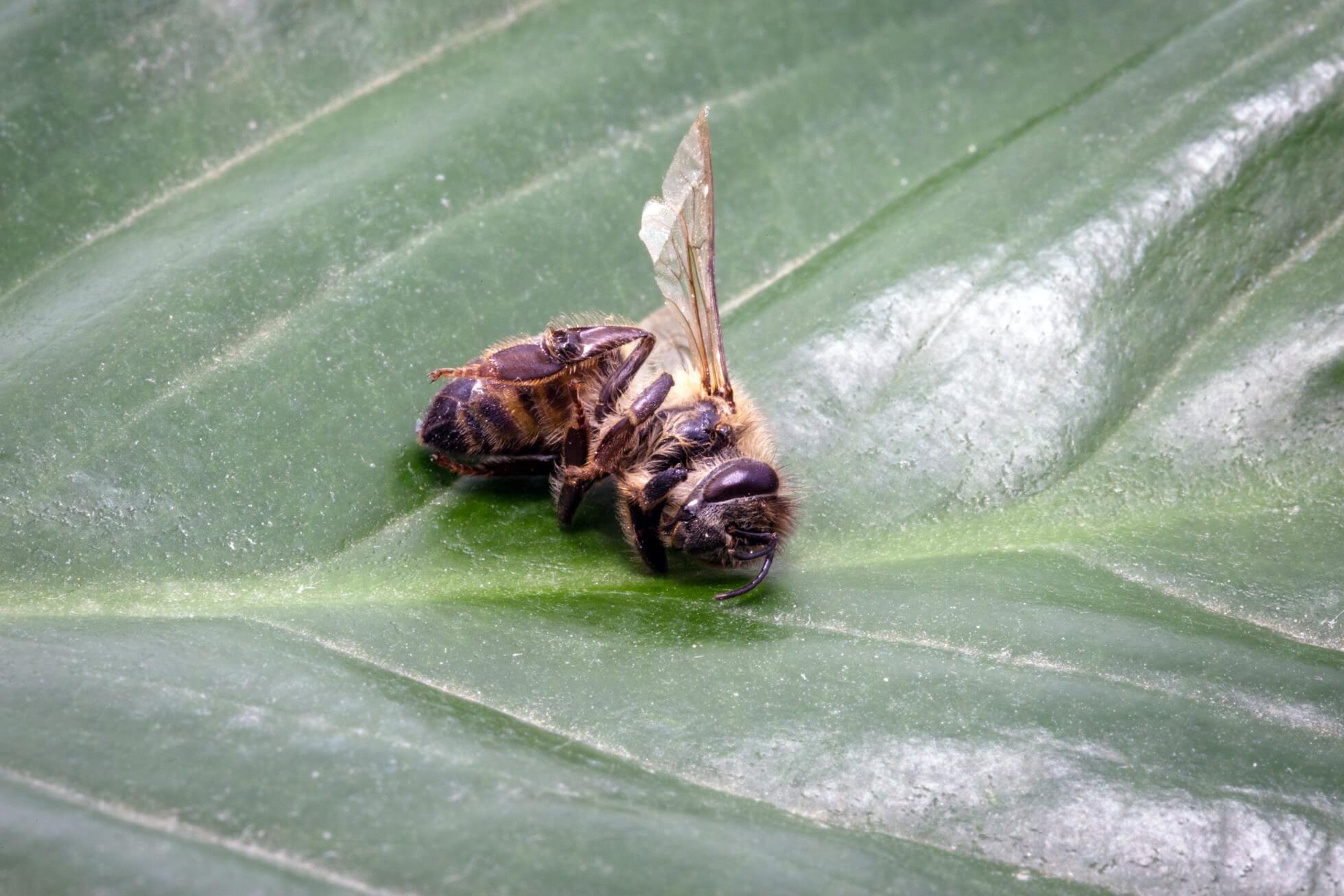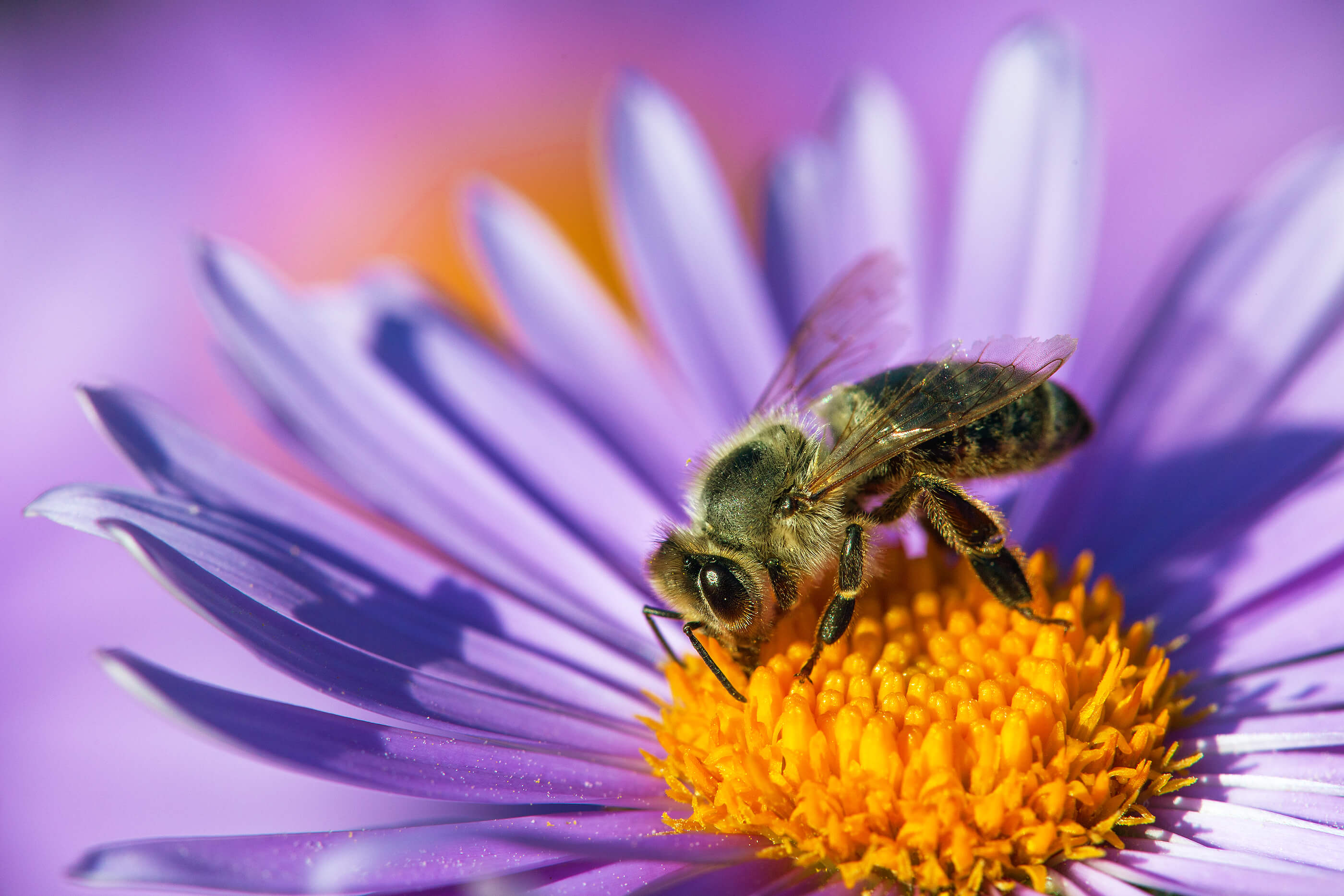There’s a constant buzz in the air when it comes to bees. Gliding from flower to flower with their distinctive bright yellow and black stripes, bees are unsung heroes in the complex ecosystems of our planet.
Unfortunately, there’s a sting in the tale. Their survival is under threat, so before it’s too late, we need to understand the importance of bees for their pollination services, biodiversity benefits, and of course, sweet-tasting honey.
What do bees do?
You may have come across the expression “busy as a bee” and bees more than live up to their diligent reputation. The only insect that produces food eaten by humans, bees can fly for up to six miles, and as fast as 15 miles per hour.
Bees amass a staggering amount of air miles. Individual bees often visit over 1,000 flowers daily, while a strong colony (around 60,000 bees) fly the equivalent distance from Earth to the moon every day.
Of course, bees don’t go from flower to flower purely for pleasure. They are a pivotal cog in the life cycle of crops and plants. They pollinate plants by transferring pollen from an anther (male part) of a plant to the stigma (female part), which allows them to reproduce. Flowers are also where bees collect nectar from — this is the sugar-rich liquid they turn into honey.
Getting your 5 A Day intake can be attributed to bees. Over 130 of our favourite fruits and vegetables from avocados and apples, to tomatoes and turnips depend on bees. They also pollinate foods eaten by other animals and birds such as berries and seeds.
If that wasn’t enough, their role as pollinators creates habitats for countless other species. They help tremendously with the growth of tropical forests, savannah woodlands, and temperate deciduous forests. Many tree species, like poplars and willows wouldn’t reach their impressive heights without the input of bees. In-turn, we benefit from clean, breathable air.
Why do we need bees to survive?
However you feel about bees, the reality is the human race wouldn’t exist without them. Your dinner plates would be bare – one third of our global food supply is pollinated by bees.
A large variety of animals also depend on bees for their food sources. By pollinating the trees and shrubs in the forests, such trees can cultivate flowers, nuts, and wild fruits that nourish animals, including bears, frogs, and squirrels.
If bees ever emitted their final buzz, biodiversity would also dramatically decrease. The colour would fade from the countryside, while many creatures, both great and small, would be starved of shelter and food. Bees contribute to intricate, interconnected ecosystems that allow a diverse number of different species to co-exist.
For many of us, the first thing we think of when we see thousands of bees clustered on the outside of the hive is the honey they produce. Not only is this natural substance delicious on toast and pancakes, it’s brimming with medicinal properties and numerous health benefits.
Honey contains antioxidants, which can shield the body from inflammation. Research has shown that chronic inflammation is associated with numerous health problems, including diabetes, heart diseases, and depression.
Why are bees important to the environment?
It’s clear from the reasons we’ve already explored in this article that bees are a vital part of the natural environment. Like all creatures, bees play a part in maintaining a balanced and successful ecosystem.
Their boundless pollination activity also directly impacts on the environment. Preventing soil erosion, keeping our waterways clean, providing flood control, and helping regulate the climate are all key responsibilities that can be found in a bee’s job description.
Not only does our planet directly benefit from the work of bees, but we as humans also reap economic rewards. According to the Royal Society of Biology (RBSB), “pollination services are estimated to provide £440 million to agriculture in increased yields – about 13% of UK income from farming.”
How many bees are left in the world?
As their numbers are constantly fluctuating, it’s difficult to pinpoint an exact number when it comes to the number of bees swarming the globe. That being said, recent estimates from the Food and Agriculture Organization of the United States suggest there are at least two trillion bees in the world in the safe gloves of beekeepers.
When did the bee population start to decline?
One dismaying fact that can be verified is that bees are in decline, and have been for decades. In the UK alone, the bee population has plummeted by more than 50% since 1985. Likewise, the USA can’t count itself as a bee-friendly country, with beekeepers in the US losing an estimated 45.5% of their managed honeybee colonies in 2020.
What is causing the decline in the bee population?
No matter what direction bees fly in, many different threats loom. Let’s put on our protective gear and find out how the likes of climate change and pesticides are causing our four-wing friends in the UK and worldwide to dwindle.
Climate change
Changes in weather patterns disrupt the synchrony between flowering plants and their pollinators (bees), causing nutritional stress. Consequently, flowers may bloom earlier or later than expected.
Climate change can also affect pollination activity in another way – through its connection to smell. These long-term shifts in temperatures and weather patterns alter the scent of plants, and thus the capacity of bees to recognise them and adapt themselves.
Temperature extremes such as heat waves are also causing a rise in bee mortality. Climate change is also linked to habitat loss (see below) as bees fail to migrate to cooler areas and establish new hives.
Habitat loss
Bees rely on nectar and pollen to keep them fuelled. Nectar is eventually converted into honey, with bees needing just an ounce of honey to power them once worldwide.
Sadly, an increase in urban developments, deforestation, and invasive farming methods has caused significant loss to pollinator-friendly habitats. Along with their food sources, there is also a scarcity of flowers for bees to forage, and safe places such as hollow trees for nesting.
Pesticides

Many pesticides are extremely toxic to bees. Even though they’re designed to fend off unwanted pests, they can reduce both a bee’s breeding success and resistance to disease.
Scientists have discovered that exposure to pesticides (in particular, neonicotinoids) can impair honeybees’ ability to navigate, bumblebees’ ability to reproduce, and solitary bees’ ability to reproduce any young at all. When they’re sprayed onto plants, they’re absorbed. So, when a bee lands on said plant, it will ingest this widely-used pesticide. This can seriously destruct the bee’s central nervous system.
How can we prevent bees from dying?
Thankfully, lady luck is still smiling, as there’s still time for us to intervene and save the bee population from extinction. Here are a couple of ways you can “bee” friendly from the comfort of your own garden.
Create a bee-friendly garden
Plant flowers that attract bees. Aim for a good variety of pollen-rich flowers and opt for single-headed flowers where possible – lavender, foxgloves, borage, and bluebells are all big buds with your new favourite insect. Not only will your garden look great, but you’ll be helping feed the bees and encourage pollination.
Provide a water source
A forgotten necessity, bees need water (as well as food and shelter) like all animals. The trick here is to offer a drinking point for bees without the risk of drowning. Honey bees also use water for cooling the hive in warm weather.
If you have access to a small pond, that will more than suffice. Failing that, a shallow birdbath or old plant tray should work just as well. Fill your bath or container with a mixture of stones, pebbles, twigs, and leaves so the bees can land above the surface and hydrate, without the risk of falling into the water.
No plan bee
Without bees, the Earth would look drastically different. Bees are remarkable creatures that we appear to take for granted. Look at them as strong environmental indicators – the decline in their population is a sign of environmental degradation.
As a race, we must work together to help bees flourish once again. We cannot afford to be ignorant or apathetic to their plight.
